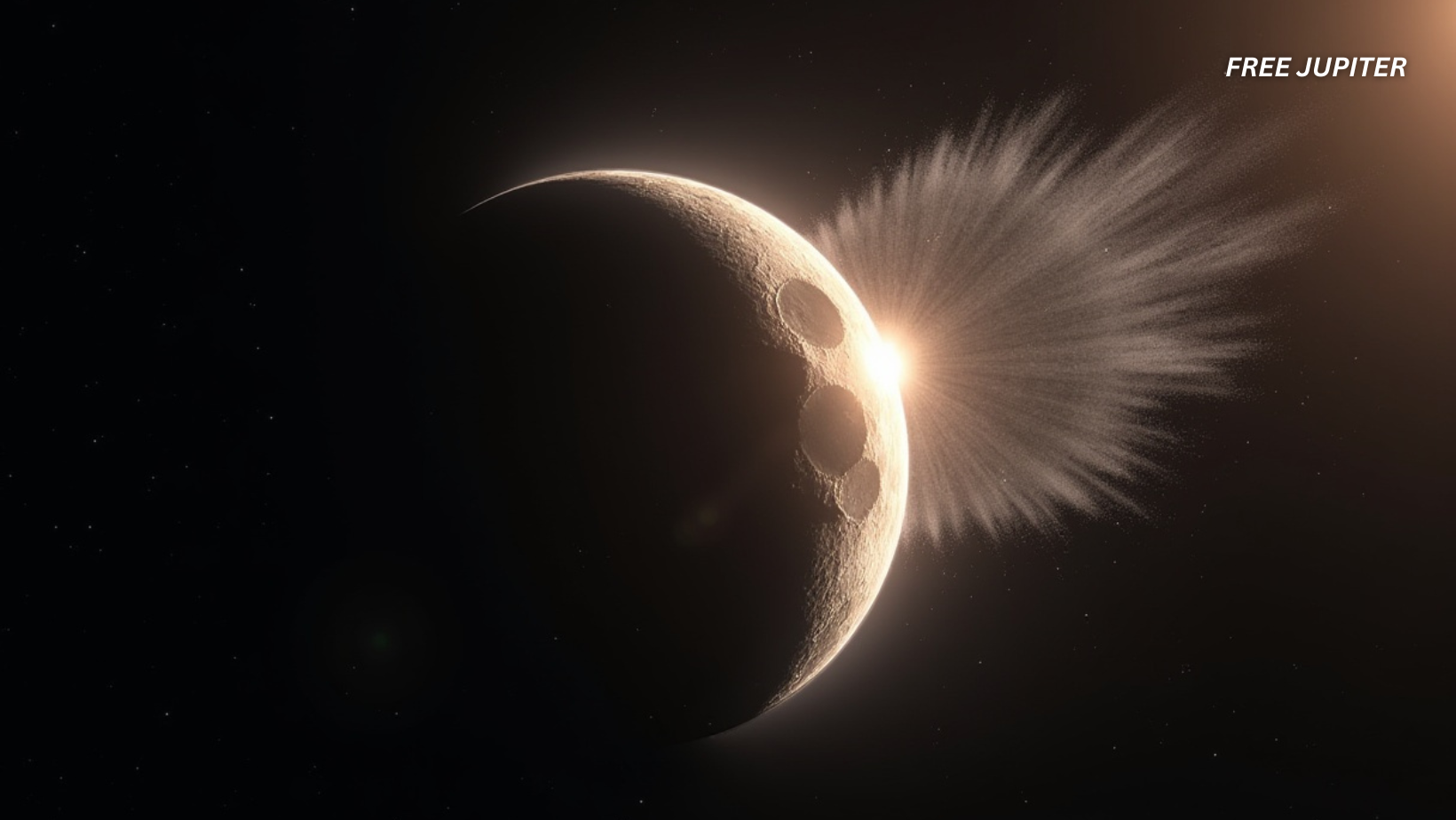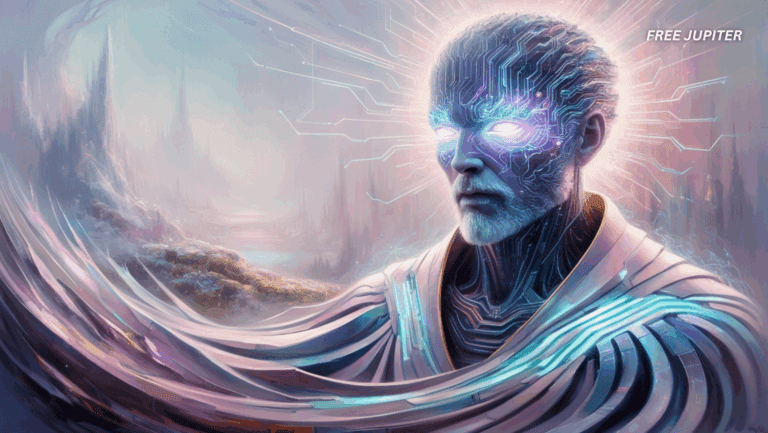For most people, asteroids are something you hear about in blockbuster films—giant rocks barreling through space while humanity scrambles to save itself at the last minute. But outside the movie screen, the reality of asteroid defense is far more complicated. The latest cosmic guest to make scientists scratch their heads is asteroid 2024 YR4, a space rock discovered in late 2024 that has a small but not insignificant chance of slamming into the moon in 2032.
At first glance, this might not sound alarming. After all, the moon has been hit by asteroids countless times before, and it wears its scars proudly in the form of craters visible even from Earth. But here’s the catch: a lunar collision of this size wouldn’t just be a distant light show. It could have very real consequences for Earth’s orbiting spacecraft, satellites, and even astronauts.
That’s why scientists are already thinking ahead—and some are even considering whether, in this rare case, a nuclear strike in space could be justified.
The Birth of a Worry: How 2024 YR4 Was Discovered
The story began in December 2024, when astronomers detected a new asteroid and gave it the temporary name 2024 YR4. At first, the math looked troubling. Early observations suggested that by 2032, it had about a 3.1% chance of colliding with Earth.
Now, to put that in perspective: in asteroid monitoring, anything above a fraction of a percent is enough to get attention. That’s because, while most asteroids are tiny and burn up harmlessly in the atmosphere, 2024 YR4 is about 180 feet (55 meters) wide. A rock of that size wouldn’t end life on Earth, but it could wipe out a city or cause devastating local destruction if it hit the ground. No wonder the discovery generated headlines.
Thankfully, the story shifted quickly. With more data, astronomers recalculated its path and realized the odds of it hitting Earth were much lower than feared—less than 0.3% by February 2025. A collective sigh of relief followed.
But there was still a twist: while Earth dodged the bullet, the moon did not. Updated tracking showed a roughly 4% chance that the asteroid could collide with our lunar neighbor.
Read more: Scientists Warn That ‘Invisible’ Asteroids Could Be Heading for Earth
What If It Hits the Moon?
If the asteroid were to strike the moon, the immediate result would be a new crater on the lunar surface. That, by itself, might not be too concerning. But the real problem lies in the debris.
When a large rock slams into the moon, it kicks up lunar ejecta—dust and chunks of rock blasted off the surface. Scientists estimate that a collision of this size could increase the number of micrometeoroids in low Earth orbit by up to 1,000 times the usual levels.
Why does that matter?
- Satellites at risk: Even a pebble-sized piece of debris traveling at high speed can damage or destroy a satellite.
- Astronaut safety: Micrometeoroids are sharp, fast, and nearly impossible to see coming. They could puncture spacecraft walls or even astronauts’ suits.
- Space station danger: If the International Space Station is still orbiting in 2032 (though it’s planned to deorbit around 2031), a surge in debris could turn it into a shooting gallery.
- Future moon missions: NASA’s Artemis program, which aims to put astronauts on the moon this decade, could also be affected by a more hazardous environment.
So while Earth’s cities are safe from 2024 YR4, its potential impact on the moon could still ripple into our daily lives—through lost communications, damaged satellites, and higher risks for space exploration.
Can’t We Just Push It Away?
The logical idea is to try to move the asteroid out of harm’s way. This concept, known as asteroid deflection, has already been tested. In 2022, NASA’s DART mission (Double Asteroid Redirection Test) successfully slammed a spacecraft into a small asteroid moonlet called Dimorphos, nudging its orbit slightly. It was a groundbreaking achievement, proving that humans can, in fact, alter the path of a space rock.
But here’s why 2024 YR4 is trickier:
- Unknown weight: Scientists still don’t know the asteroid’s exact mass. Without that information, predicting how much force would be needed to shift it safely is extremely difficult.
- Risk of miscalculation: If an attempted deflection went wrong, the asteroid could be nudged onto a path toward Earth instead—an outcome far worse than a lunar crash.
- Time pressure: There’s only a narrow window of time to act. Any mission would need to launch between April 2030 and April 2032, giving researchers limited time to design, test, and execute a plan.
Because of these uncertainties, some experts argue that trying to gently “push” the asteroid is too risky and impractical.
Read more: Earth’s Water Might Not Have Originated From Asteroids After All: Scientists
Public Misconceptions: Why This Isn’t Just a Hollywood Plot
Whenever the topic of asteroid defense comes up, people often imagine a single hero mission where a spacecraft blows up the threat at the last possible second. In reality, asteroid defense is more about planning, timing, and precision.
- No last-minute saves: Blowing up an asteroid just before impact could actually make things worse, spreading fragments into a shotgun blast.
- Long-term planning matters: Deflection strategies only work if there’s years of preparation—not weeks or days.
- Not all asteroids are the same: Their size, composition, and spin make a huge difference in how they respond to force.
This is why the 2024 YR4 case is so fascinating. It highlights the razor-thin line between “safe” and “dangerous,” depending on whether the asteroid hits Earth, the moon, or nothing at all.
So, Should We Be Worried?
The short answer: no—at least not right now. The probability of a moon impact is still only about 4%, and chances of it hitting Earth are even smaller. That said, scientists are using this opportunity as a case study to explore what humanity could—and should—do when faced with a real threat.
The real lesson of 2024 YR4 isn’t about panic. It’s about preparation. Whether through kinetic impactors, nuclear options, or entirely new technologies, the discovery serves as a reminder that Earth’s neighborhood is filled with wandering rocks. Having a plan in place is the difference between being a bystander and being ready to act.
Read more: Scientists Say An Ancient Impact With Another Planet Could Have Sparked Life on Earth
A Final Thought: The Moon’s Battle Scars
The moon has been hit countless times before, and every crater we see in the night sky tells a story of past collisions. If 2024 YR4 does end up striking, it will just leave another mark on an already scarred surface.
The difference today is that, for the first time in history, humans might actually have the ability to decide the outcome. Whether that means firing a spacecraft, launching a nuclear payload, or inventing something entirely new, we’re beginning to step into the role of active guardians of our planet—and perhaps, our moon.
Featured image: Freepik.
Friendly Note: FreeJupiter.com shares general information for curious minds. Please fact-check all claims and double-check health info with a qualified professional. 🌱










